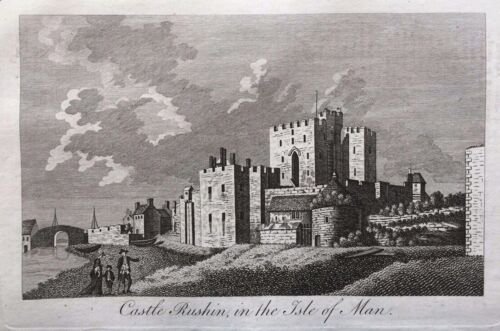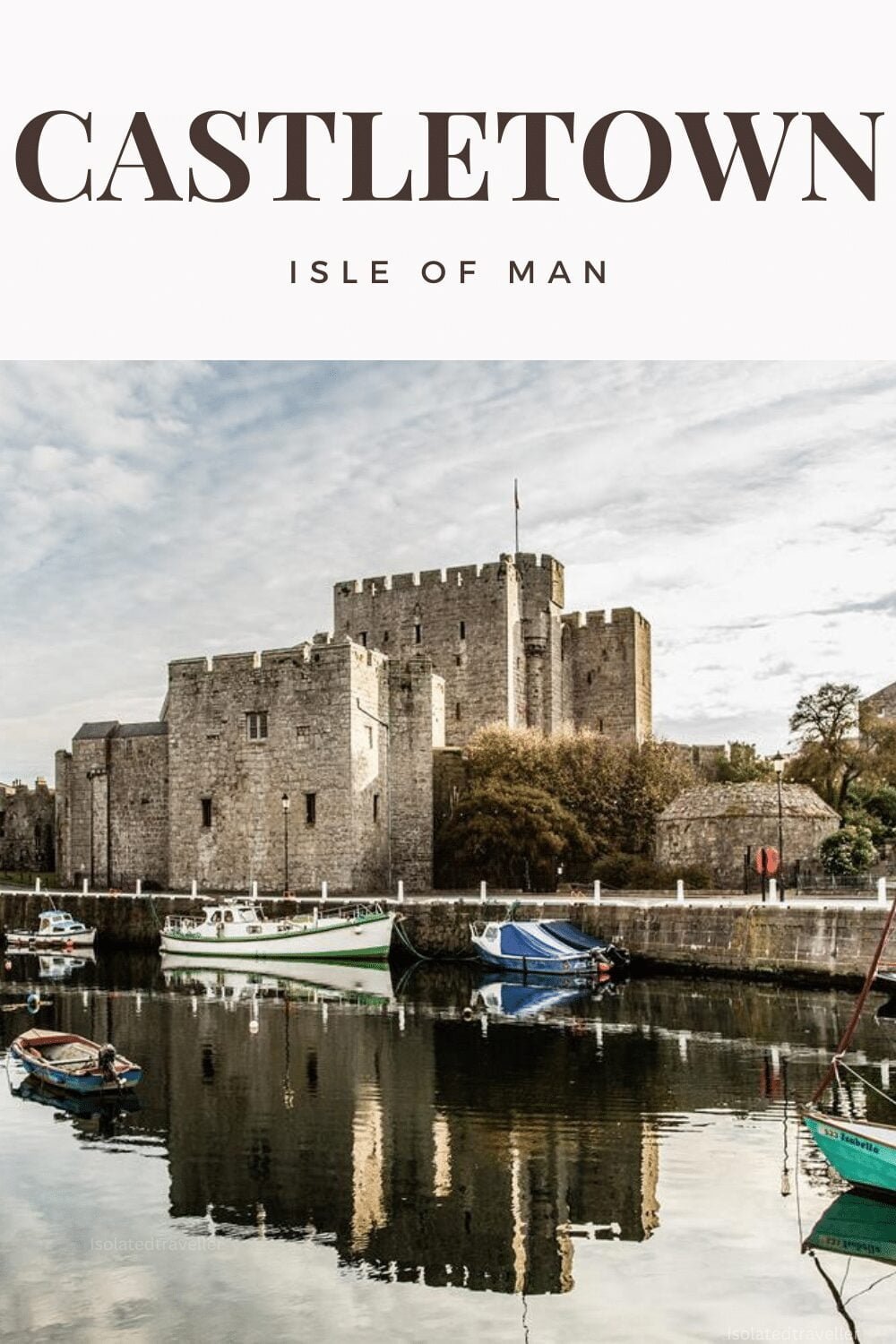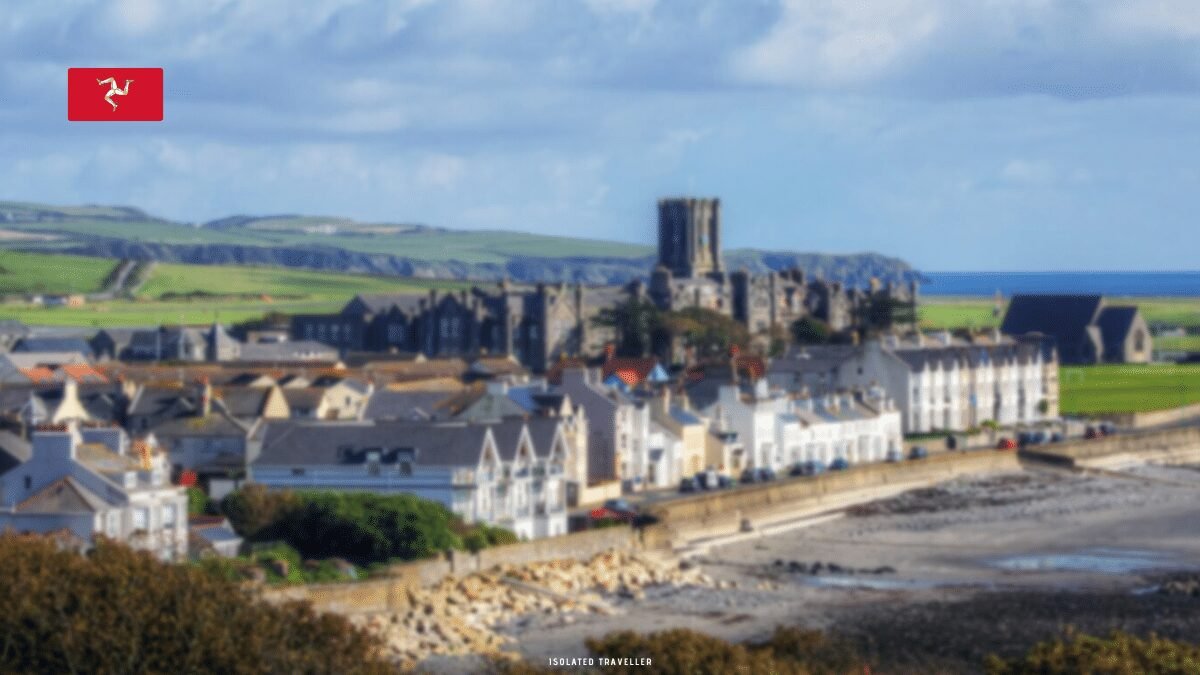Castletown, Isle of Man
Castletown is a historic town in the southern part of the Isle of Man, a self-governing British Crown dependency in the Irish Sea. Castletown was the Isle of Man’s capital until 1869, and it has a long history dating back to the Viking era. Castle Rushen, a mediaeval castle built in the 13th century, is one of Castletown’s main attractions. Over the centuries, the castle has served as a royal residence, a prison, and a courthouse, and it is now open to the public as a museum.
The Nautical Museum, which is housed in an old warehouse on the quayside, is another popular attraction in Castletown. The museum tells the story of the Isle of Man’s maritime history through exhibits such as ship models, navigation equipment, and smuggling and wrecking displays. Other attractions in Castletown include the Old House of Keys, which served as the Manx parliament’s former home, and the Old Grammar School, which dates back to the 17th century.
Castletown also has a beautiful harbour that is still used by fishing boats and pleasure crafts. The town has several cafes, pubs, and restaurants, as well as shops selling local crafts and souvenirs. Overall, Castletown is a charming town with a rich history and plenty to see and do, making it a popular tourist destination on the Isle of Man.
Geography Of Castletown
Castletown is located near the island’s southern tip, at the mouth of the River Silverburn. It is bounded to the east by the sea and to the west by rolling hills. The historic centre of the town revolves around the mediaeval Castle Rushen, which sits atop a hill overlooking the harbour.
One of the town’s most important features is its harbour, which has been used as a port for centuries. It was once a bustling trade and commerce centre with a thriving fishing industry. Today, it is primarily used for recreational purposes such as boating and yachting.
Interesting Facts About Castletown
History Of Castletown

Castletown has a rich and fascinating history that dates back to the 11th century when Vikings first settled on the site. The town grew in importance over the centuries, eventually becoming the capital of the Isle of Man in the 14th century.
Castle Rushen, a mediaeval fortress built in the 13th century by the island’s Norse-Gaelic rulers, is one of the most significant landmarks in Castletown. The castle has served as a royal residence, a prison, and a military garrison over the centuries. It is now a museum open to the public.
Castletown was an important trade and commerce centre in the 16th and 17th centuries, with a thriving fishing industry and a bustling port. The town was also a smuggling and piracy hotspot, with many of its inhabitants involved in illegal activities.
Castletown was home to a number of notable figures during the 18th and 19th centuries, including Bishop Wilson, a religious leader known for his piety and charitable works, and William Christian, a politician and landowner who was executed for his role in a rebellion against the English crown.
Castletown’s importance as the Isle of Man’s capital declined in the twentieth century, and the seat of government was relocated to Douglas. The town, however, continues to be an important cultural and historical centre, with many of its buildings and landmarks preserved as part of the island’s rich heritage. Castletown is now a popular tourist destination, attracting visitors from all over the world who come to learn about its history and admire its natural beauty.
Castletown Economy
Castletown’s economy is diverse, with a mix of tourism, agriculture, and small-scale manufacturing. According to data from the Isle of Man Government, the median income for all workers in the Isle of Man, including Castletown, was around £28,000 per year as of 2021.
Tourism is a significant industry in the town, with many visitors coming to see the historic landmarks and scenic beauty. The town’s harbour is a popular destination for visitors who enjoy boat rides and fishing excursions. The town also has several museums, including the Nautical Museum, which celebrates the island’s maritime history, and the Old House of Keys, which served as the Isle of Man’s seat of government. In the tourism industry, the average income can vary depending on the job and level of experience. For example, hotel workers and tour guides may earn an average of around £18,000 to £25,000 per year, while management positions may command higher salaries.
Another important industry in Castletown is agriculture, with many farms in the surrounding area producing a variety of crops such as potatoes, barley, and vegetables. There is also a small-scale manufacturing sector in town, with several local businesses producing textiles, pottery, and crafts. farmers and agricultural workers earn an average of around £20,000 to £30,000 per year, depending on the size and type of farm.
Castletown has also become an important centre for the financial services industry in recent years, with several international companies establishing operations there. This has aided in the growth of the local economy and the creation of new jobs. In the financial services industry, salaries can be higher, with some positions paying six-figure salaries. However, these positions often require specialized skills and qualifications.
Overall, the economy of Castletown is diverse and resilient, with a mix of traditional and modern industries supporting the town’s continued growth and prosperity.
Castletown and nearby Attractions
Castletown and its surroundings are home to a variety of attractions with something for everyone. Here are some of the best places to visit and things to do in the area:
- Castle Rushen: One of Castletown’s most notable landmarks, this mediaeval fortress provides an intriguing glimpse into the island’s history.
- The Old House of Keys: Once the seat of government for the Isle of Man, this historic structure is now a museum open to the public.
- The Nautical Museum honours the island’s maritime history with a variety of exhibits and artefacts.
- Scarlett Visitor Centre: This visitor centre provides information about the geology and history of the Isle of Man, as well as guided walks through the nearby Scarlett Nature Reserve.
- The Sound: This natural beauty spot is located on the island’s southern tip and offers breathtaking views of the sea and surrounding countryside.
- Port Erin: Just a few miles from Castletown, this charming seaside town offers a variety of amenities, including shops, cafes, and a sandy beach.
- Cregneash Village: A living museum offering a glimpse into the island’s rural past, Cregneash Village is a traditional Manx village.
- Rushen Abbey: Founded in the 12th century, this historic abbey is now open to the public as a museum.
- The Great Laxey Wheel: Located in the nearby village of Laxey, this historic waterwheel is one of the world’s largest working waterwheels.
- Snaefell Mountain Railway: This historic railway transports visitors to the summit of Snaefell Mountain, the highest point on the island.

Related Articles

